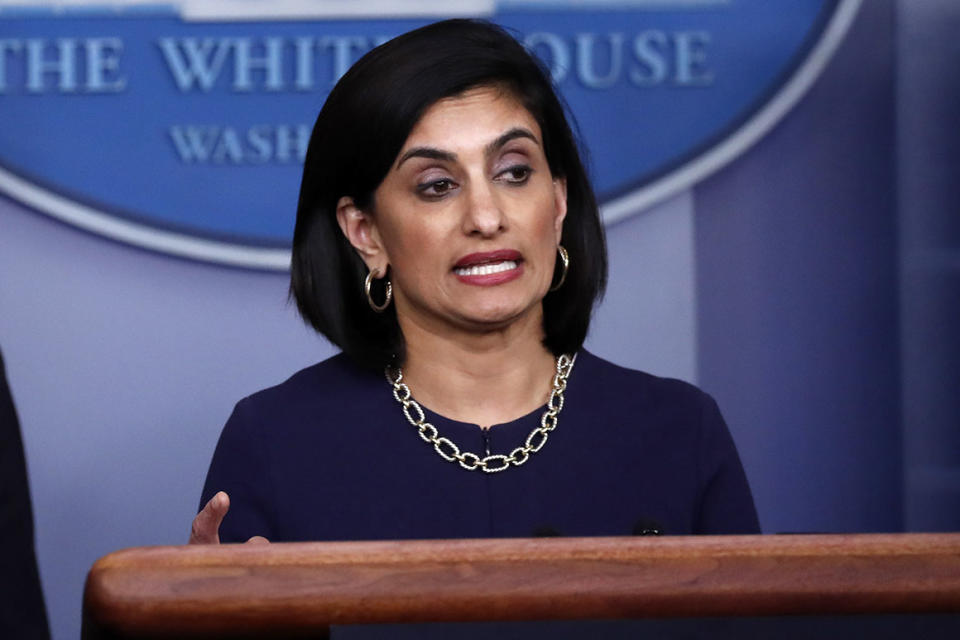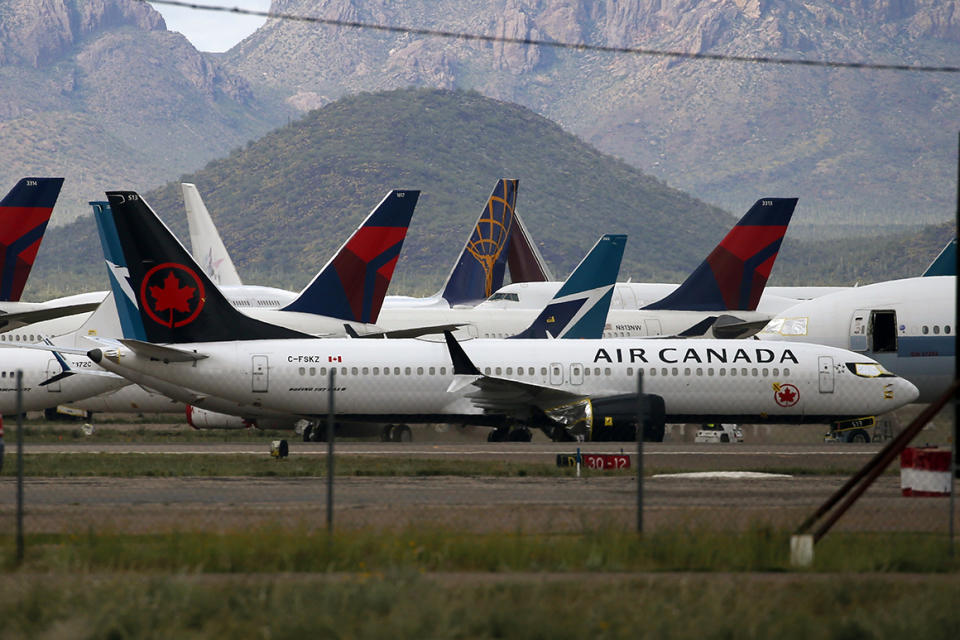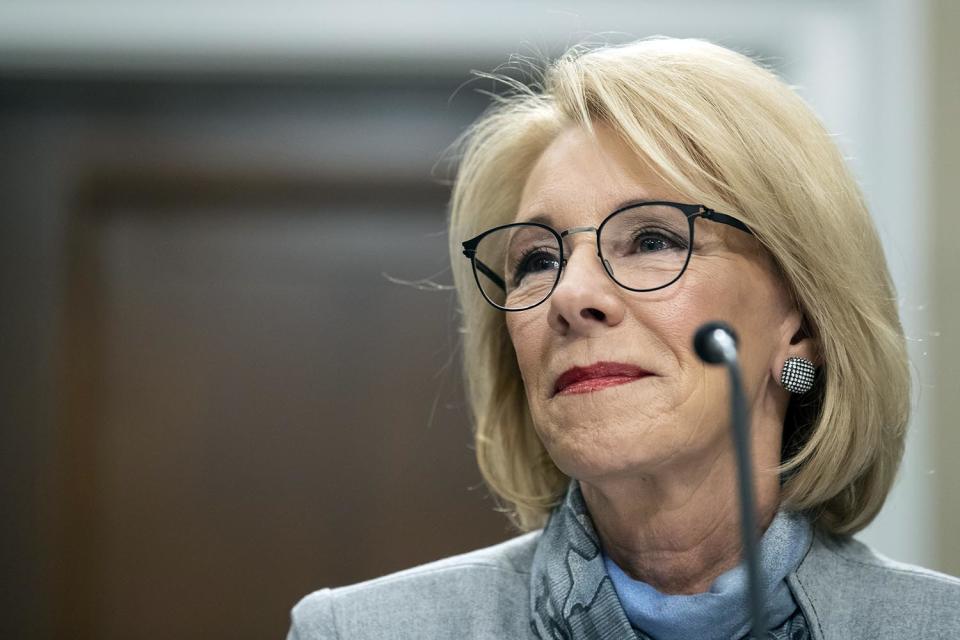Oversight sputters as Trump starts doling out billions in coronavirus aid
Congress assured America that its frenzied rush to deliver $2 trillion in coronavirus relief wouldn't lead to waste, fraud or abuse because they packed the sprawling law with powerful safeguards.
Yet, as the Trump administration begins pumping billions of taxpayer dollars into the economy, none of the built-in oversight mechanisms are even close to functional. And their absence will soon be glaringly obvious as the gusher of cash and extraordinary new power granted to the administration fuels massive logjams, headaches and fear across overburdened hospitals, overcrowded unemployment offices and many sectors of the ailing economy.
Congressional leaders have appointed just one of five members to a commission to serve as lawmakers' eyes on Trump administration decisions for a $500 billion fund for distressed industries. An inspector general nominated by President Donald Trump intended to provide a second check has already generated controversy among Democrats and is unlikely to see swift Senate confirmation. And a panel of federal watchdogs meant to be a third independent overseer was upended Tuesday when Trump sidelined its chairman, setting back the one mechanism that appeared on track to begin oversight.
Trump has also indicated he might ignore additional protections built into the law meant to keep Congress apprised of any concerns about mismanagement, issuing a signing statement that said it would be unconstitutional to require Executive Branch watchdogs to report any obstruction in their investigations, unless Trump himself approves.
Democratic lawmakers have pointed to Trump's actions as justification for their demands that the law include a series of powerful layers of oversight. Yet they haven't acknowledged that those mechanisms are not keeping pace with the rollout of the enormous law — even as members of both parties clamor to layer hundreds of billions of dollars more in emergency aid onto the original package.
In addition, every pillar of the $2 trillion package — from its portal to steer $350 billion to struggling small businesses to its desperately needed relief for airlines — has already run into significant roadblocks and unintended consequences that would be tailored for independent review.
Here's a look at where the CARES Act has begun to unfurl — or unravel — without the investigators ready to enforce protections or catch flaws in implementation.
Hospitals in crisis

The Department of Health and Human Services is slated to dole out $30 billion this week, with the bulk going to large hospitals that care for major shares of the country's Medicare patients — although details on this plan haven’t been released yet. An additional $70 billion is expected to flow in two additional tranches in the coming weeks.
But it’s not clear that the money is going to go where it’s needed most.
CMS Administrator Seema Verma said on Tuesday night that there would be “no strings attached” to the $30 billion in checks going out within days, raising the prospect that the funds might not all be used as envisioned. Federal officials have acknowledged that speed was the most important factor in delivering the first batch of money — an effort to shore up shaky hospital finances as they became overrun with coronavirus-stricken patients.
In addition, the rapidly shifting coronavirus hot spots around the country could complicate HHS' overall efforts to target funds for hospitals. California, for example, was once expected to be an area of dire need for supplies, but the state has since seen improvements in its outlook. The sprawling HHS bureaucracy might not be nimble enough to shift gears when the geographic epicenter of the outbreak shifts as well, and there’s no one to hold them to account before the money gets disbursed.
Banks overwhelmed
Another key feature of the CARES Act is a $350 billion fund to shore up buckling small businesses with loans. Though the program was expected to be live already, it's unclear how much funding — if any — has gone out the door.
Yet, even without oversight of the program, and a growing crisis in its execution as businesses struggle to get loans from banks, Congress seems poised to send another $250 billion to the program in the coming days.
The challenge of implementing the small business loan program surfaced vividly last week, when the Small Business Administration delivered guidelines to banks just hours before they were due to turn on the spigot. As of Wednesday, banks said they still lacked critical information needed to close out loans and that SBA's loan authorization system continued to malfunction.
The flood of companies seeking assistance seems sure to compound the challenges facing banks, and the Treasury Department and SBA have done little to ease concerns that they’re getting on track.
Tax refunds and stimulus checks hit snags
The CARES Act included a provision meant to provide relief to companies by allowing them to get tax refunds by redoing their previous year’s taxes to include their current losses. There's one glaring problem: The companies are required to file for those refunds on paper and mail them in — and most IRS employees are working from home. There's virtually no one there to pick up the mail.
There's also plenty of other guidance pending from the IRS, a typical problem in typical times but one sure to slow the impact of the CARES Act as companies struggle to survive.
Meanwhile, the IRS is still figuring out how to quickly parcel out the cash payments the new law promised to individuals and families across the country. The agency intends to deliver as many as possible via direct deposit, which would expedite those payments. But for many low-income Americans who don't file tax returns, the IRS would likely not have direct deposit info. So the agency is setting up a website to collect banking information in order to more quickly process the checks, but there’s no timeline on when that will be up and running.
Airline relief still stalled

The CARES Act included $29 billion in an immediate infusion for passenger and cargo airlines, funding meant to quickly shore up the industry's cratering finances by paying workers' salaries and preventing layoffs. But even though the money was due to begin flowing earlier this week, it hasn't happened yet, and airlines are still in talks with the Trump administration over the terms.
Treasury released guidance for applying for the grants and loans last week, with the initial application deadline for grants last Friday. Airlines that missed that deadline won't get their applications considered as quickly. And perhaps most urgently, unions are concerned that some airlines could refuse the grants if the U.S. government insists on taking a stake in the airline as part of the tradeoff.
The law also includes another $29 billion in loans for airlines, part of the Treasury's $500 billion economic rescue fund. There's no deadline or timeframe for those funds to begin flowing, but there's no indication that any have moved yet. As of Monday, Treasury wasn't accepting applications for the loans.
So at a critical moment for the airline industry, the rescue law has done little in the way of providing relief.
No education funds flowing yet

The law included $31 billion in emergency education assistance, much of it earmarked for states, K-12 schools, universities and direct aid for college students. But so far, there's been no funding distributed by the Education Department and there's been no guidance about how or when that money might arrive.
Higher education groups and state officials have been urging the Trump administration to move more quickly to immediately disburse the funding amid unprecedented school and college closures across the country. Govs. Asa Hutchinson of Arkansas and Jay Inslee of Washington over the weekend wrote a letter on behalf of governors, urging Education Secretary Betsy DeVos to provide the funding “within the next two weeks.” But DeVos hasn’t given any indication she’s on board, meaning the relief money is still just sitting there.
Meanwhile, there's also a push among some Senate Democrats to exclude for-profit colleges from eligibility — or to impose stringent restrictions on how those companies can use the money — but a whole new layer of such oversight seems unlikely to be accepted by Republicans.
Broadband concerns
The FCC appears to be one of the few agencies moving quickly — adopting an order last month to tap $200 million in CARES Act funding for a "Covid-19 Telehealth Program," an effort to speed grants to health care providers to expand telehealth capabilities. At the same time, the FCC is skipping its normal competitive bidding requirements to ensure the money gets to where it’s needed speedily — a decision that could mean a worse deal for taxpayers.
Meanwhile, there are plans for a separate pot of $100 million in broadband funding flowing through the Department of Agriculture to help build out internet infrastructure in rural areas, plus another $25 million for USDA's Distance Learning, Telemedicine and Broadband program. But this infusion has already stirred some concerns about exacerbating already existing problems with duplication and waste.
A Republican FCC commissioner has repeatedly raised concerns about the department’s effort, worrying that the program has the potential to undermine and wastefully duplicate other broadband efforts, some of which may already receive financial help from the FCC.
Susannah Luthi, Brian Faler, Brianna Gurciullo, John Hendel, Michael Stratford and Zach Warmbrodt contributed to this report.

